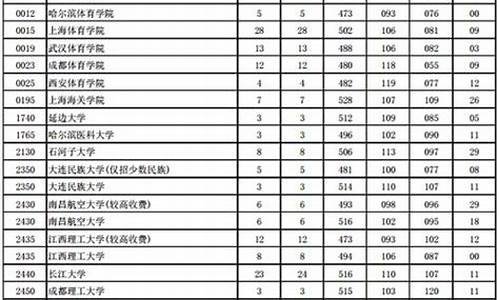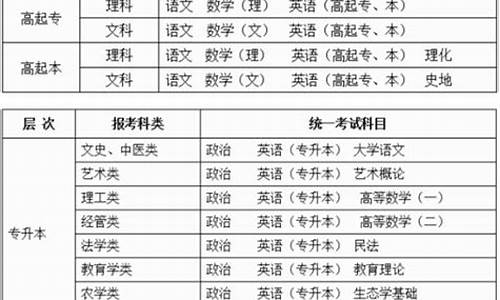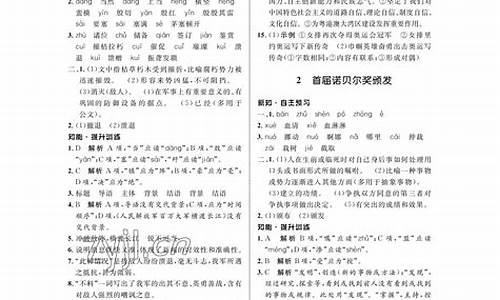高中非谓语动词的用法总结ppt_非谓语动词课件高考
1.高考英语语法辅导:非谓语动词做定语
2.英语中非谓语动词用法?老是错在单选题中。
3.高三语法总结,非谓语动词及定语从句
4.非谓语动词知识点归纳
5.英语非谓语动词知识点详解
6.非谓语动词

非谓语动词是高中语法较难的一部分,建议你先看一点书,了解非谓语动词的结构及使用方法。下面所举的例子都是10年的高考题,如果看不懂可以给我留言。
1. ____________the city center, we saw a stone statue of about 10 meters in height.
A. Approaching B. Approached C. To approach D. To be approached
解析:考察现在分词作状语,表示正在进行或主动的动作。此时分词的逻辑主语就是主句的主语,因此要注意人称、时态和语态的一致性。
2. Listen! Do you hear someone___________for help?
A. calling B. call C. to call D. called
解析:该空在句中为非谓语动词作宾补,根据 someone与call的主动关系排除D项。Hear
后接不定式作宾补时应省略to,由此排除C项。由Listen可判断此处表示正在求救,故
选A项。
3. Dina, ___________ for months to find a job as a waitress, finally took a position at a local advertising agency.
A. struggling B. struggled C. having struggled D. to struggle
解析:该空,分词短语作时间状语,其逻辑主语Dina与struggle为主动关系,故排除B项。由剧中的finally可知非谓语动词表示的动作发生在句中谓语took a position之前,故用现在分词的完成主动式。
4.So far nobody has claimed the money _________ in the library.
A. discovered B. to be discovered C. discovering D. having discovered
解析:该空在句中作后置定语修饰the money,根据the money与discover的被动关系,排除C、D两项。B项表示的是“将要被发现”的意思,根据句意“到目前为止还没有人来认领在图书馆被发现的钱”可判断选A项。
高考英语语法辅导:非谓语动词做定语
doing既可指动名词,也可指现在分词,现主要为你讲解动名词与不定式的用法区别。 动名词与不定式都是动词的一种非限定形式,是中学英语的一项重点内容,也是高考及各类考试的常考内容之一。动名词与不定式的用法及区别归纳如下: 一、作主语 1.不定式与动名词均可作主语,两者常可换用。例如: Cleaning the playground / To clean the playground is her fulltime job. 打扫操场的卫生是她的专职工作。 To watch / Watching them play football is very interesting. 看他们踢足球是很有趣的。 2. 注意前后一致的原则,如主语是不定式或动名词,表语也用不定式或动名词。例如: To see her is to love her.谁看见她都会喜欢她。 Saving is having. 节约即是收入。 3. 但如果作主语的不定式是固定的说法,或表示一种强烈的对比,或指具体的某次动作等时,通常不用动名词代替不定式。例如: To love others is to be loved. 爱人即爱己。(表示对比) To learn a language in one month is impossible. 在一个月内学会一门语言是不可能的。(表示某次具体的动作) 二、作表语 1. 不定式和动名词均可作表语,解释或说明主语的具体内容,两者常可换用,但需要注意主语与表语的一致性。例如: My work is looking after / to look after the children.我的工作是照看这些孩子。 To live is to do something worthwhile. 活着就是要做一些有价值的事情。(比较:Living is doing something worthwhile.) 2. 如果表示某种结果、不幸的命运或预言,或表示"同意;命令;决定;劝告"等意,则往往用不定式作表语。例如: The important thing is to save lives. 救人要紧。 You are to hand in the exercises tomorrow. 你们必须明天交练习。 三、作宾语 1. 有些动词后可接动名词作宾语,但不可接不定式作宾语;有些动词则反之。详细内容见本报第1期第1面"动词不定式过关指导"。 2. begin, start, hate, like, love, prefer 等动词后接不定式与接动名词区别不大,但这类动词与 should 或 would 连用时,只接不定式;begin 或 start 用于进行时态时,后面常常接不定式。例如: I don't like troubling / to trouble him. 我不想去麻烦他。 Would you like to leave a message? 你要不要留个话儿? 3. 某些动词后接动名词与接不定式意义不同。这类动词常用的有 remember, forget, regret, stop, try, mean 等。如 remember, forget 后接不定式表示未发生的动作,接动名词表示已发生的动作;regret 后接不定式表示"遗憾;抱歉",常与 to say, to tell, to inform 等连用, 后接动名词指对已发生的事表示"后悔或悔恨";stop to do sth. 表示"停下来去做某事", stop doing sth. 表示"停止做某事";try to do sth. 表示"试图做某事",try doing sth. 表示"试试做某事";mean to do sth. 表示"有意或打算做某事", mean doing sth. 表示"意味着……"。例如: I remember seeing you somewhere in Guilin.我记得在桂林的什么地方见到过你。(seeing 这个动作已经发生) Remember to mail the letter for me. 记住帮我寄这封信。(to mail 这个动作尚未发生) 4. want 及 need 表示主语"想或需要"做某事,后接不定式的主动式作宾语;want, need 及 require 表示主语"需要"被作某种处置,后接动名词的主动式或接不定式的被动式均可。例如: I want to paint the wall. 我想粉刷这堵墙。 The wall wants painting / to be painted. 这墙需要粉刷了。 四、作定语 1. 动名词作定语表示名词的属性或事物的用途。例如: No one is allowed to speak aloud in the reading room. 阅览室里不准大声说话。 There is a swimming pool in our school. 我们学校有一个游泳池。 2. 不定式作定语表示将要发生的动作。例如: That will be the only thing to do now. 那恐怕是目前唯一可行的办法。 Is that the best way to solve the problem?那是解决这个问题的最好办法吗?
英语中非谓语动词用法?老是错在单选题中。
南开中学 李士明
非谓语动词做定语
直接修饰名词的成分称为定语,一般由形容词或名词担当,也可以分别由不定式、分词或动名词等非谓语动词来担当。那么如何区别并正确使用非谓语动词呢?
NON-FINITES
1. 现在分词与过去分词的区别
我们知道非谓语动词都源于及物和不及物两种谓语动词,要了解现在分词与过去分词的区别就要从谓语动词的基本属性开始。
1)及物动词 (v.t.)
及物动词的主语我们称为动作的发出者(sender),宾语称为动作的承受者(receiver)。
例如:
The news surprised
动词+ing (发出者) 及物动词v.t.
the students.
动词+ed (承受者)
Surprise是及物动词, 在使用surprise这个动词的非谓语分词形式时,修饰动作发出者news用现在分词形式(动词+ing),修饰动作的承受者用过去分词形式(动词+ed)。
●They are talking about the surprising news. (surprising做定语修饰发出者news)
The news is surprising. (surprising做表语修饰发出者news)
They are talking about the surprised students. (surprised做定语修饰承受者students)
The students are surprised. (surprised做表语修饰承受者students)
再来看几个例子:
●exciting games激烈精彩的比赛, excited spectators激情振奋的观众
●disappointing results令人沮丧的结果, disappointed people大失所望的人们
●exhausting work令人疲惫不堪的工作, exhausted workers筋疲力尽的工人
●moving stories感人肺腑的故事, moved students感激涕零的学生
从以上例子可见,现在分词和过去分词都可以用作形容词来修饰名词,修饰动作发出者用现在分词,修饰动作承受者用过去分词。要特别注意的是,依据被修饰的名词是人还是物来判断现在分词和过去分词的用法是不准确的。
例如: They complicated the situation by introducing some more restriction.
他们采用了一些更多的限制把形势复杂化了。
及物动词complicate的发出者是人they, 而承受者是物。因此,“复杂恶化的形势”应译为the complicated situation,“形势是令人棘手的” 应译为The situation is complicated.
从这个例子可以清楚地看出,如果根据中文,很容易将“令人棘手的形势”错误地理解为 “complicating situation”。
再比如我们常用的:
a broken cup 一个破杯子; spoken English英语口语;exported products出口产品。
因此,准确了解所修饰的名词与及物动词的关系,是正确使用及物动词的现在分词和过去分词的关键。
2) 不及物动词(v.i.)
不及物动词只有动作的发出者,不存在动作的承受者。因此,不及物动词的现在分词源于进行时,表示动作正在进行,而过去分词则源于完成时,表示动作已完成。
例如:
●He looked at the leaves which are falling in the air.(从句用进行时修饰名词the leaves)
他看着空气中飘然下落的叶子。
=He looked at the leaves falling in the air.(现在分词短语修饰名词the leaves表示进行)
=He looked at the falling leaves in the air. (现在分词修饰名词the leaves表示进行)
●He walked on the leaves which had fallen on the ground.(从句用完成时修饰名词the leaves) 他走在地面的落叶上。
He walked on the leaves fallen on the ground.(过去分词短语修饰名词leaves表示过去)
He walked on the fallen leaves on the ground. (过去分词修饰名词leaves表示过去)
●the rising sun. = the sun that is rising. 冉冉升起的太阳
the risen sun = the sun that has risen. 已经升在天空的太阳
●boiling water = water which is boiling. 沸腾的水
boiled water = water which has boiled 开过的水
2. 不同形式不定式做定语的区别
动词不定式的一般式可以用做形容词,担当名词的定语, 表示将要发生的动作,不定式的进行式和完成式都不可以用作定语。
1)及物动词不定式一般式主动to do sth和被动to be done 两种形式的区别。
例如:
●Have you anything to send? = Have you anything that you will send?
你有什么东西要(自己)寄吗?(主动含义,动作由you自己去完成)
(to send做定语, 源于定语从句that you will send, 修饰先行词anything, 表示将来。)
●Have you anything to be sent (by others)?=Have you anything that will be sent(by others)?
你有什么东西要(我或别人)寄吗?(被动含义,动作由他人others去完成)
(to be sent做定语, 源于定语从句that will be sent, 修饰先行词anything, 表示将来。)
从以上两个例子可以看出,不定式的主动形式to send来源于主动语态的定语从句。
而不定式的被动形式to be sent来源于被动语态的定语从句, 不能错误地认为to send 是主动形式表示被动,准确地讲应该牢记主动形式的不定式源于主动语态的从句,被动形式的不定式则源于被动语态的从句,两者绝不可以混淆。
●I have some books for you to read. = I have some books that you should read.
我有几本书希望你读一读。
(for you to read做定语, 源于定语从句that you should read, 修饰先行词books, 表示将来。原从句的主语you在不定式的前面以for you 的形式出现,担当不定式的逻辑主语。)
2)不及物动词不定式一般式做定语
当不及物动词做定语时, 后面必须有相应的介词与前面所修饰的名词相呼应, 从汉语角度理解,而忽略了必要的介词是不及物动词做定语时常见的错误。
例如:
●He is looking for a room to live in.= He is looking for a room which he will live in.
他现在正在找房间住。
(to live in做定语, 源于定语从句which he will live in, 修饰先行词room, 表示将来。)
●Would you like to have another pen to write with? ( to write with the pen)
你需要再准备一支笔用吗?
●Smith is a good man to work with. ( to work with the man)
与史密斯一起工作是再好不过了。
●Lei Feng is a brilliant example for us to learn from. ( to learn from the example)
雷锋是我们学习的光辉榜样。
●Can you lend me a chair to sit on?
您可以借给我一把椅子坐吗?
●Global Financial Crisis is a hot topic to talk about today. ( to talk about the topic)
全球性金融危机是当前人们谈论的热点话题。
高三语法总结,非谓语动词及定语从句
(一)动词不定式:(to)+do,具有名词、形容词、副词的特征。
否定式:not + (to) do
(1)一般式:不定式的一般式所表示的动作与谓语动词动作同时发生或发生在谓语动词动作之后,
例如:
I'm glad to meet you.
He seems to know a lot.
We plan to pay a visit.
He wants to be an artist.
The patient asked to be operated on at once.
The teacher ordered the work to be done.
(2)进行式:不定式的进行式所表示的动作与谓语动词动作同时发生,例如:
The boy pretended to be working hard.
He seems to be reading in his room.
(3)完成式:不定式的完成式表示的动作发生在谓语动词动作之前,例如:
I regretted to have told a lie.
I happened to have seen the film.
He is pleased to have met his friend.
2.不定式的句法功能:
(1)作主语:
To finish the work in ten minutes is very hard.
To lose your heart means failure.
动词不定式短语作主语时,常用it作形式主语,真正的主语不定式置于句后,例如上面两句可用如下形式:
It is very hard to finish the work in ten minutes.
It means failure to lose your heart.
常用句式有:1、It+be+名词+to do。2、It takes sb.+some time+to do。3、It+be+形容词+of sb +to do。4、It+be+形容词+for sb.+to do。常用careless,,clever,good,foolish,honest,kind,lazy,nice,right,silly,stupid,wise,等表示赞扬或批评的形容词,不定式前的sb.可作其逻辑主语。
(2)作表语:
Her job is to clean the hall.
He appears to have caught a cold.
(3)作宾语:
常与不定式做宾语连用的动词有:want, hope, wish, offer, fail, plan, learn, pretend, refuse, manage, help, agree, promise, prefer, 如果不定式(宾语)后面有宾语补足语,则用it作形式宾语,真正的宾语(不定式)后置,放在宾语补足语后面,例如:
Marx found it important to study the situation in Russia.
动词不定式也可充当介词宾语,如:
I have no choice but to stay here.
He did nothing last Sunday but repair his bike.
动词不定式前有时可与疑问词连用,如:
He gave us some advice on how to learn English.
(4)作宾语补足语:
在复合宾语中,动词不定式可充当宾语补足语,如下动词常跟这种复合宾语:want, wish, ask, tell, order, beg, permit, help, advise, persuade, allow, prepare, cause, force, call on, wait for, invite.
此外,介词有时也与这种复合宾语连用,如:
With a lot of work to do, he didn't go to the cinema.
有些动词如make, let, see, watch, hear, feel, have等与不带有to的不定式连用,但改为被动语态时,不定式要加to, 如:
I saw him cross the road.
He was seen to cross the road.
(5)作定语:
动词不定式作定语,放在所修饰的名词或代词后。与所修饰名词有如下关系:
①动宾关系:
I have a meeting to attend.
注意:不定式为不及物动词时,所修饰的名词如果是地点、工具等,应有必要的介词,如:
He found a good house to live in.
The child has nothing to worry about.
What did you open it with?
如果不定式修饰time, place, way,可以省略介词:
He has no place to live.
This is the best way to work out this problem.
如果不定式所修饰名词是不定式动作承受者,不定式可用主动式也可用被动式:
Have you got anything to send?
Have you got anything to be sent?
②说明所修饰名词的内容:
We have made a plan to finish the work.
③被修饰名词是不定式逻辑主语:
He is the first to get here.
(6)作状语:
①表目的:
He worked day and night to get the money.
She sold her hair to buy the watch chain.
注意不定式放句首时,逻辑主语与句子主语要一致:
wrong:To save money, every means has been tried.
right:To save money, he has tried every means.
wrong:To learn English well, a dictionary is needed.
right:To learn English well, he needs a dictionary.
②表结果:
He arrived late to find the train gone.
常用only放在不定式前表示强调:
I visited him only to find him out.
③表原因:
They were very sad to hear the news.
④表程度:
It's too dark for us to see anything.
The question is simple for him to answer.
(7)作独立成分:
To tell you the truth, I don't like the way he talked.
(8)不定式的省略:保留to省略do动词。
If you don't want to do it, you don't need to.
(9)不定式的并列:第二个不定式可省略to。
He wished to study medicine and become a doctor.
(二)动名词:
动名词既具有动词的一些特征,又具有名词的句法功能。
1.动名词的形式: Ving
否定式:not + 动名词
(1)一般式:
Seeing is believing. 眼见为实。
(2)被动式:
He came to the party without being invited.他未被邀请就来到了晚会。
(3)完成式:
We remembered having seen the film. 我们记得看过这部**。
(4)完成被动式:
He forgot having been taken to Guangzhou when he was five years old.
他忘记五岁时曾被带到广州去过。
(5)否定式:not + 动名词
I regret not following his advice. 我后悔没听他的劝告。
(6)复合结构:物主代词(或名词所有格)+ 动名词
He suggested our trying it once again. 他建议我们再试一次。
His not knowing English troubled him a lot.
他不懂英语给他带来许多麻烦。
2.动名词的句法功能:
(1)作主语:
Reading aloud is very helpful. 朗读是很有好处的。
Collecting stamps is interesting. 集邮很有趣。
当动名词短语作主语时常用it作形式主语。
It's no use quarrelling.争吵是没用的。
(2)作表语:
In the ant city, the queen's job is laying eggs.
在蚂蚁王国,蚁后的工作是产卵。
(3)作宾语:
They haven't finished building the dam. 他们还没有建好大坝。
We have to prevent the air from being polluted.
我们必须阻止空气被污染。
注意动名词既可作动词宾语也可作介词宾语,如上面两个例句。此外,动名词作宾语时,若跟有宾语补足语,则常用形式宾语it,例如:
We found it no good making fun of others. 我们发现取笑他人不好。
要记住如下动词及短语只跟动名词作宾语:
enjoy, finish, suggest, avoid(避免), excuse ,delay, imagine, keep, miss, consider, admit(承认),deny(否认), mind, permit, forbid, practise, risk(冒险), appreciate(感激), be busy, be worth, feel like, can't stand, can't help(情不自禁地), think of, dream of, be fond of, prevent…(from),keep …from, stop…(from),protect…from, set about, be engaged in, spend…(in), succeed in, be used to, look forward to, object to, pay attention to, insist on, feel like
(4)作定语:
He can't walk without a walking-stick. 他没有拐杖不能走路。
Is there a swimming pool in your school? 你们学校有游泳池吗?
(5)作同位语:
The cave, his hiding-place is secret. 那个山洞,他藏身的地方很秘密。
His habit, listening to the news on the radio remains unchanged.
他收听收音机新闻节目的习惯仍未改变。
(三)现在分词:
现在分词既具有动词的一些特征,又具有形容词和副词的句法功能。
1、现在分词的形式:
否定式:not + 现在分词
(1)现在分词的主动语态:现在分词主动语态的一般式表示与谓语动词所表示的动作同时发生,完成
式表示的动作在谓语动词所表示的动作之前发生,常作状语。例如:
They went to the park, singing and talking. 他们边唱边说向公园走去。
Having done his homework, he played basket-ball. 做完作业,他开始打篮球。
(2)现在分词的被动语态:一般式表示与谓语动词同时发生的被动的动作,完成式表示发生在谓语动
词之前的被动的动作。
The problem being discussed is very important. 正在被讨论的问题很重要。
Having been told many times, the naughty boy made the same mistake.
被告诉了好几遍,这个淘气的孩子又犯了同一个错误。
2.现在分词的句法功能:
(1)作定语:现在分词作定语,当分词单独做定语时,放在所修饰的名词前;如果是分词短语做定语
放在名词后。
In the following years he worked even harder.
在后来的几年中,他学习更努力了。
The man speaking to the teacher is our monitor's father.
正与老师谈话的那个人是我们班长的父亲。
现在分词作定语相当于一个定语从句的句法功能,如:in the following years也可用in the years that followed; the man speaking to the teacher可改为the man who is speaking to the teacher.
(2)现在分词作表语:
The film being shown in the cinema is exciting. 正在这家上演的**很棒。
The present situation is inspiring. 当前的形势鼓舞人心。
be + doing既可能表示现在进行时,也可能是现在分词做表语,它们的区别在于be + doing表示进行的动作是进行时,而表示特征时是系动词be与现在分词构成系表结构。
(3)作宾语补足语:
如下动词后可跟现在分词作宾语补足语:
see, watch, hear, feel, find, get, keep, notice, observe, listen to, look at, leave, catch等。例如:
Can you hear her singing the song in the next room? 你能听见她在隔壁唱歌吗?
He kept the car waiting at the gate. 他让小汽车在门口等着。
(4)现在分词作状语:
①作时间状语:
(While) Working in the factory, he was an advanced worker.
在工厂工作时,他是一名先进工人。
②作原因状语:
Being a League member, he is always helping others. 由于是共青团员,他经常帮助他人。
③作方式状语,表示伴随:
He stayed at home, cleaning and washing. 他呆在家里,又擦又洗。
④作条件状语:
(If) Playing all day, you will waste your valuable time.
要是整天玩,你就会浪费宝贵的时间。
⑤作结果状语:
He dropped the glass, breaking it into pieces. 他把杯子掉了,结果摔得粉碎。
⑥作目的状语:
He went swimming the other day. 几天前他去游泳了。
⑦作让步状语:
Though raining heavily, it cleared up very soon.
虽然雨下得很大,但不久天就晴了。
⑧与逻辑主语构成独立主格:
I waiting for the bus, a bird fell on my head.
我等汽车时,一只鸟落到我头上。
All the tickets having been sold out, they went away disappointedly.
所有的票已经卖光了,他们失望地离开了。
Time permitting, we'll do another two exercises.
如果时间允许,我们将做另两个练习。
有时也可用with (without) +名词(代词宾格)+分词形式
With the lights burning, he fell asleep. 他点着灯睡着了。
⑨作独立成分:
udging from(by) his appearance, he must be an actor.
从外表看,他一定是个演员。
Generally speaking, girls are more careful. 一般说来,女孩子更细心。
(四)过去分词:
过去分词只有一种形式:规则动词由动词原形加词尾-ed构成。不规则动词的过去分词没有统一的规则要求,要一一记住。
过去分词的句法功能:
1.过去分词作定语:
Our class went on an organized trip last Monday. 上周一我们班开展了一次有组织的旅行。
Those elected as committee members will attend the meeting. 当选为委员的人将出席这次会。
注意当过去分词是单词时,一般用于名词前,如果是过去分词短语,就放在名词的后面。过去分词做定语相当于一个被动语态的定语从句。
2.过去分词作表语:
The window is broken. 窗户破了。
They were frightened at the sad sight. 他们对眼前悲惨的景象感到很害怕。
注意:be + 过去分词,如果表示状态是系表结构,如果表示被动的动作是被动语态。区别:
The window is broken.(系表)
The window was broken by the boy.(被动)
有些过去分词是不及物动词构成的,不表示被动,只表示完成。如:
boiled water(开水) fallen leaves(落叶)
newly arrived goods(新到的货) the risen sun(升起的太阳)
the changed world(变了的世界)
这类过去分词有:gone, come, fallen, risen, changed, arrived, returned, passed等。
3.过去分词作宾语补足语:
I heard the song sung several times last week.
上周我听见这首歌被唱了好几次。
有时过去分词做with短语中的宾语补足语:
With the work done, they went out to play. 工作做完了,他们出去玩去了。
4.过去分词作状语:
Praised by the neighbours, he became the pride of his parents.
受到邻居们的表扬,他成为父母的骄傲。(表示原因)
Once seen, it can never be forgotten.
一旦它被看见,人们就忘不了。(表示时间)
Given more time, I'll be able to do it better.
如果给予更多的时间,我能做得更好。(表示条件)
Though told of the danger, he still risked his life to save the boy.
虽然被告之有危险,他仍然冒生命危险去救那个孩子。(表示让步)
Filled with hopes and fears, he entered the cave. 心中充满了希望与恐惧,他走进山洞。
常考的非谓语动词是说不准的,因为高考考的是语法的运用,只要以上掌握了,就达到高考的要求了,题目是千变万化的,你掌握了就不怕考什么了。 祝你学习进步,希望能够帮助到您!
非谓语动词知识点归纳
非谓语动词包括1动词不定式2动名词3分词(包括现在分词
过去分词)
动词不定式可做除谓语外的其他成分。
动名词和现在分词的用法区别是一个难点。注意两个所做的成分不同及用法上的不同。
动名词偏向于名词的使用方法,现在分词偏向于形容词的使用方法。
现在分词和过去分词的用法区别也是一个考点。
定语从句:简单说来就是一个从句在主句中做定语。
分为:限定性和非限定性
常见的是限定性定语从句(它和主句的关系密切去掉则影响这个句意的表达)非限定性定语从句(常由which引导由逗号隔开)
还要注意限定性定语从句和非限定性定语从句之间的句意细微差别。
英语非谓语动词知识点详解
高考临近,你是否还在焦虑英语做的不好。其实想学好英语是有技巧的,下面就是我给大家带来的非谓语动词知识点归纳,希望大家喜欢!
高考英语知识点归纳:非谓语动词用主动表被动
(1)不定式to blame,to let用作表语时,通常要用主动形式表示被动意义
(2)某些“be+形容词+to do”结构中的不定式通常要用主动形式表示被动意义
①这类结构的特点是 句子 主语就是其后不定式的逻辑宾语,按理说其中的不定式要用被动形式,但习惯上却要用主动表被动。
②有时形容词后跟有名词,在名词后用作定语的不定式用主动形式表示被动意义。
③有少数用于类似结构的形容词(如fit,ready,free等),其中的不定式用主动式和被动式均可。
(3)不定式用于某些动词(如have,have got,get,want,need等)的宾语后作定语时,如果不定式的逻辑主语就是句子的主语,则要用主动形式表示被动意义
(4)不定式用于某些双宾动词(如give,show,buy,lend,get等)的直接宾语后作定语时,如果不定式的逻辑主语就是直接宾语前的间接宾语,通常用主动形式表示被动意义
(5)不定式用于修饰“there be+名词”中的名词时,可用主动式,也可用被动式,有时含义差不多
(6)be worth后的动名词要用主动表被动
(7)在need,want,require等少数表示“需要”的动词后的动名词用主动形式表被动意义
①以上结构中的动名词改用不定式则要用被动式表示被动意义
②它们后接名词时也可表示被动意义
高三英语 复习 方法
一、抓课本、重基础、强化词句的积累
英语基础知识的复习要以课本为纲,按照知识之间的内在联系,将它们进行分类整理。在这个过程中,要注意以新带旧,使初中和高中所学的知识形成系统, 总结 出规律性,这样才能融会贯通,也才能把知识转化为能力。
学生应以高三课本为主要教材,在老师的带领下,深入挖掘教材中的语言知识,巩固语言基础,对课本中反复出现的语言知识进行科学归类和巧妙整理,找出其中的规律、抓住线索。复习知识是为了运用知识,而网络化的知识更便于运用,更有利于学科能力的培养。只有经过对所学的教材进行层层挖掘才有希望把知识形成网络。这对其实现知识的迁移有重要的影响,有利于其实际运用能力的提高,并在应考中运用自如。
二、抓语篇学习、重阅读能力
从近几年的高考试题来看,死记硬背,强化训练,沉湎于“题海战术”是难以出好成绩的。将中心和重心放在单项选择上是不合时宜的。因此,要根据自己的实际情况,制定出切实可行的复习计划。做到按部就班,有条不紊,循序渐进。其中,语篇学习最应引起学生的足够重视。
高三课本中 文章 题材广、内容新颖,知识覆盖面宽。因此,学生应充分利用高三课本中的阅读材料,从文章的内容、文章的结构、作者的观点、态度及相关的背景知识巧妙设置问题,不断提高自己的阅读能力,开拓知识视野。同时,文章的新颖内容还可以提高学生对英语的学习兴趣。
三、精选习题,有效训练
笔者建议学生应有针对性地加强运用练习。期刊文章分类查询,尽在期刊图书馆通过结合高考考点进行针对性训练,在很短的时间内复习完所有的语言知识,提高复习效率,以便有充裕的时间进行听力、完形填空、阅读等专项能力训练和模拟训练,避免在复习课本知识和培养能力之间顾此失彼。在此基础上,通过科学系统的训练,提高英语交际能力,从而收到事半功倍的效果。
非谓语动词
编者按:高考前的第一轮复习也开始一段时间了,同学们都在利用这些复习的时间强化学习,为大家整理了非谓语动词知识点,在高三英语第一轮复习时,给您最及时的帮助!
不定式主动语态被动语态与谓语动词的关系
一般式To doTo be done动作发生在谓语动作之后
进行式To be doing 与谓语动作同时发生
完成式To have doneTo have been done动作发生在谓语动作之前
动名词主动语态被动语态与谓语动词的`关系
一般式DoingBeing done与谓语动作同时发生
完成式Having doingHaving been done动作发生在谓语动作之前
现在分词主动语态被动语态与谓语动词的关系
一般式DoingBeing done与谓语动作同时发生
完成式Having doneHaving been done动作发生在谓语动作之前
不定式
一、不定式的作用
1、作主语不定式作主语时,谓语用单数。 往往用it作形式主语,把不定式放在谓语后面。如:
Ittookustwohourstofinishthejob.
Itisimpossibleforustogetthereontime.
Itisverykindofyoutohelpus.
注意:(1)其他系动词如look,appear等也可用于此句型。
(2)当不定式作主语的句子中又有一个不定式作表语时,不能用Itis…to…的句型。试比较:
Itistonegatemyownideatobelievehim.(错)
Tobelievehimistonegatemyownidea.(对)
(3)Itis+adj.of/forsb.todosth.结构中,当不定式的逻辑主语和前面的形容词可以构成系表结构时,用of,否则用for.
2、作宾语
(1)动词+不定式。如:
Hemanagedtoescapefromthefire.
Ifindithardtogetalongwithhim.(it作形式宾语)
注:下列动词通常用不定式作宾语:want,try,hope,wish,need,forget,know,promise,refuse,help,decide,begin,start,learn,agree,choose,get等
(2)动词+疑问词+to,“特殊疑问句+不定式”相当于名词,作宾语。如:
Idon‘tknowwhattodonext/howtodoitnext.
Ican’tdecidewhentogothere.
注意:不定式短语作宾语时,如果还带有宾语补足语,往往把不定式短语放在宾语补足语之后,用it作形式宾语。如:
Ifinditnecessarytolearnaforeignlanguage.
3、作宾语补足语
(1)动词+宾语+不定式(todo)。如:
Hewarnedmetobecareful.
IwantyoutospeaktoTom.
Whatmakesyouthinkso?(不带to的不定式)
注:可以用动词不定式做宾补的动词有:ask,tell,order,want,get,wouldlike,like,advise,invite,allow,help,wish,warn,expect,prefer,encourage
(2)表见解、看法的动词结构可为:动词+宾语+tobe的不定式结构。如:
WeconsiderTomtobeoneofthebeststudentsinourclass.
Thebookisbelievedtobeuseful.(被动语态)
(3)There+不定式。如:
Wedidn‘texpecttheretobesomanypeoplethere.我们没料到会有那么多人在那里。
注意:
(1)有些动词需用as短语作补语,像regard,think,believe,take,consider。如:
WeregardTomasourbestteacher.我们认为汤姆是我们最好的老师。
Marytookhimasherfather.玛丽把他当作自己的父亲。
(2)在动词feel(一感),hear,listento(二听),have,let,make(三让),notice,see,watch,observe,lookat(五看)(即:吾看三室两厅一感觉)等后面的补足语中,不定式不带to,但变为被动语态后,必须带to。如:
Theysawtheboyfalloffthetree.Theboywasseentofalloffthetree.
(3)help后面作宾语补足语的不定式可以带to,也可以不带to.
Ioftenhelphim(to)cleantheroom.
Ihelpedhim(to)findhisthings.
高考英语语法专题讲解-主谓一致
★着重讲解混搭情况,均遵守以下原则:
1. 意义一致原则
主语后跟有以下引起的短语:谓语动词仍与短语前的主语的形式保持一致。
1.1 (together) with: Alice (together) with her parents often goes to the park on Sundays.
1.2 except/but: Every picture except/ but these two has been sold.
Nobody but Mary and I was in the classroom at that time.
1.3 no less than: His sister, no less than you, is wrong.
1.4 rather than: The father, rather than the brothers, is responsible for the accident.
1.5 perhaps : Peter, perhaps John, is playing with the little dog.
1.6 like: He, like you and Xiao Liu is very diligent.
1.7 including/ besides/ as well as
2. 就近原则
2.1 主语由以下连词连接:谓语动词与后一个主语一致:
2.2.1(Either)…or…: Either you or I am going to the movies.
2.2.2 Neither…nor…
2.2.3 Whether…or…
2.2.4 Not only…but (also)
2.2.5 Not…but…
2.2 there be 句型: be 动词与后面第一个名词一致
E.g. There is an apple, two bananas and some oranges on the plates.
2.3副词here, there, now, then, up, down, in, out, away, such连接的全部倒装结构中:谓语动词由动词后面的主语决定
On the wall hang two maps. 墙上挂着两张地图。
On the wall hangs a world of map. 墙上挂着一张世界地图。
Such is the result. 结果就是这样。
Such are the results. 这就是结果
3. 整体原则
3.1 并列主语如果指的是同一个人、同一事物或同一概念时,谓语动词用单数,and后面的名词没有冠词:
The writer and worker is coming to our school tomorrow.
(一个人)
The writer and the worker are coming to our school tomorrow.
(两个人)
Bread and butter is their daily food.
3.2表示时间、距离、价格、度量衡等的复数名词或短语作为一个整体看待时,谓语动词常用单数形式:
E.g. Three years is not a long time.
Ten dollars is what he needs.
Five hundred miles is a long distance.
3.3复数形式的专有名词作为整体看待(人名、地点、国家、组织、书籍、报刊等),动词用单数形式:
E.g. The United Nations has passed a resolution(决议)。
“The Arabian Nights”(《天方夜谭》)is an interesting book.
3.4集合名词people, police ,cattle作主语,谓语动词用复数形式:
E.g. The police are searching for him.
The cattle are grassing (吃草)。
4. 谓单原则
4.1 and连接的并列单数名词前如有each, every, no修饰时,谓语动词要用单数形式。
E.g. Every boy and girl has been invited to the party.
No teacher and no student is absent today.
Many a student is busy with their lessons.
4.2 用many a, more than one 修饰名词时,谓语动词要用单数形式。
E.g. More than one person has made the suggestion.
Many a rough man has been civilized by his wife.
4.3 Each, Either, One, Another, The other, Neither作主语时,谓语动词用单数形式:
E.g. Each takes a cup of tea.
Either is correct.
4.4 由every, some, any, no构成的合成代词作主语时,谓语动词用单数形式:
E.g. Nothing is to be done.
4.5 means, politics, physics, plastics作主语时,谓语动词用单数形式.
5. 具体情况原则
5.1 all, few, more, most, some, any, none, half, the rest等作主语时,既可表示复数意义,也可表示单数意义,谓语动词要根据实际情况而定:
All of the apple is rotten. 整个苹果都烂了。
不可数-> 谓单
All of the apples are rotten. 所有的苹果都烂了。
可数-> 谓复
Most of the wood was used to make furniture.
不可数-> 谓单
Most of the people are from England.
可数-> 谓复
5.2 the + 形容词(或分词)作主语时,常指一类人,谓语动词用复数形式。如指的是抽象概念,谓语动词则用单数形式:
5.3 population当人口讲时,谓语动词用单数形式;当人们讲时,谓语动词用复数:
5.4 the number of + 名词复数,是表示“…的数字”,作主语时,谓语动词用单数形式;
a (large / great) number of + 名词复数,表示许多,作主语时;谓语动词用复数形式:
5.5 有些集体名词如family, team, group, class, audience, government等作主语时,如看作是一个整体,谓语动词则用单数形式;如强调各个成员时,谓语动词要用复数形式:
6. 先行词原则
关系代词who, that, which等在定语从句中作主语时,其谓语动词的数应与句中先行词的数一致。
声明:本站所有文章资源内容,如无特殊说明或标注,均为采集网络资源。如若本站内容侵犯了原著者的合法权益,可联系本站删除。












